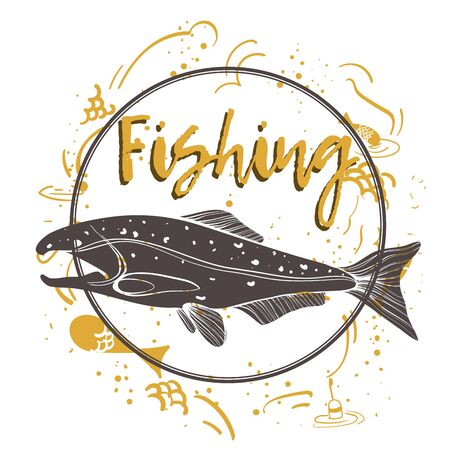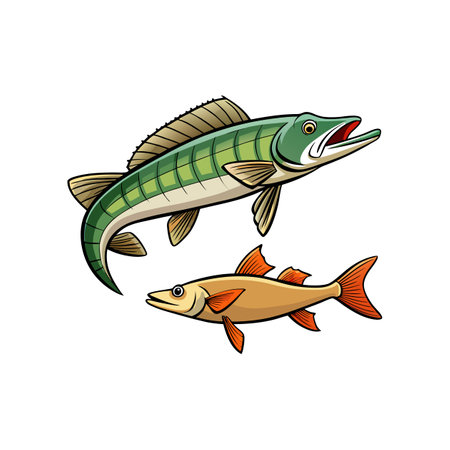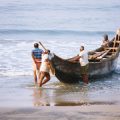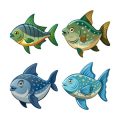Introduction to Trolling in the Indian Context
Trolling, as a fishing technique, has long been an integral part of the coastal livelihood in India. Traditionally, Indian fishermen have relied on indigenous trolling methods, utilising handcrafted wooden boats known as “vallams” or “catamarans” and employing hand-woven nets and simple lines. These techniques were shaped not only by the diverse marine environments found along Indias extensive coastline—from the Arabian Sea to the Bay of Bengal—but also by generations of local knowledge passed down through families and fishing communities. In coastal villages such as those in Kerala, Tamil Nadu, and Gujarat, trolling is more than a means of sustenance; it holds deep socio-cultural significance. Fishing trips are often collective efforts, strengthening community bonds and forming the backbone of many regional festivals and rituals. The catch from traditional trolling supports local markets and contributes to the food security of entire communities. This heritage is reflected in folklore, songs, and daily practices, making trolling a symbol of resilience and adaptability among Indian fishermen. However, as environmental changes and economic pressures increase, these age-old methods are now at a crossroads, setting the stage for a technical revolution in trolling practices.
Emergence of New Technologies in Indian Trolling Methods
The Indian fishing industry, especially the trolling sector, has witnessed a rapid infusion of technological advancements in recent years. The traditional wooden boats and manual navigation methods are gradually being replaced by mechanised boats equipped with state-of-the-art gadgets. This transformation is not just about upgrading gear; it’s about enhancing productivity, safety, and sustainability while remaining rooted in local realities.
Adoption of Modern Gadgets and Mechanised Boats
Mechanised boats have become increasingly accessible to Indian fishermen, thanks to government subsidies and local boatyards offering customisation to suit regional waters. These boats are fitted with diesel engines, hydraulic winches for net hauling, and insulated fish holds to preserve the catch. Key gadgets like echo sounders, sonar devices, and wireless communication systems have revolutionised how fishermen locate fish shoals and communicate at sea.
Integration of GPS Systems
One of the game changers in Indian trolling is the widespread adoption of Global Positioning System (GPS) technology. Affordable GPS units are now available even in rural coastal markets, often bundled with basic training sessions provided by NGOs or fisheries departments. GPS not only helps pinpoint productive fishing grounds but also ensures safer navigation during rough monsoons or low visibility conditions common along the Indian coastline.
Market Accessibility and Local Adaptations
The accessibility of these technologies varies across different states and communities, influenced by local economic conditions and infrastructure. Fishermen from Kerala and Tamil Nadu might have better access to advanced boats due to stronger cooperative societies and proximity to urban centres, while their counterparts in Odisha or Gujarat may rely on shared equipment models or incremental upgrades. Here’s a comparative overview:
| State/Region | Mechanised Boat Adoption (%) | Common Gadgets Used | Local Adaptation Strategies |
|---|---|---|---|
| Kerala | 75 | GPS, Sonar, VHF Radio | Collective purchase via co-ops; community training sessions |
| Tamil Nadu | 68 | GPS, Echo Sounder | Panchayat-led financing; local fabrication shops for repairs |
| Gujarat | 55 | Basic GPS, Mobile Apps | Rotational use among crews; emphasis on cost-sharing models |
| Odisha | 40 | Mobile Navigation Apps, Manual Nets | NGO-driven tech dissemination; phased adoption due to cost constraints |
This technical revolution in trolling methods reflects not just a shift in equipment but an evolving mindset—one that blends tradition with innovation to sustain livelihoods along India’s vibrant coastlines.

3. Challenges and Initial Resistance
When technical revolution in trolling methods first began to sweep across Indian coastal communities, it did not arrive without its share of skepticism and anxiety. For many Indian fishermen, the prospect of adopting new technology was not simply a matter of upgrading their boats or nets—it represented a direct challenge to long-held traditions, family expertise, and the rhythm of daily life shaped by generations. The introduction of advanced trolling systems, GPS navigation, and mechanized winches brought promises of increased efficiency and bigger catches, but also raised pressing concerns.
Investment Fears
One of the primary hurdles faced by local fishermen was the substantial initial investment required for new equipment. Traditional fishing methods often involved lower costs and minimal maintenance, making them accessible even to those with modest means. In contrast, modern trolling gear demanded significant capital outlay—not just for purchase but also for training, repairs, and upgrades. Many feared that these investments could become financial burdens if the expected returns did not materialize.
Attachment to Tradition
The cultural attachment to time-tested techniques added another layer of resistance. For countless families along India’s coastline—from Gujarat to Tamil Nadu—fishing is more than an occupation; it is a way of life steeped in rituals, community practices, and ancestral wisdom. The idea of abandoning traditional nets or handlines in favour of mechanized systems was met with reluctance, as elders worried about eroding cultural identity and losing respect for the sea’s natural rhythms.
Adapting to New Systems
Furthermore, adapting to unfamiliar technology presented practical challenges. Operating advanced trolling machinery required learning new skills—often from outside trainers who spoke different dialects or had limited understanding of local conditions. This led to misunderstandings, errors at sea, and sometimes costly accidents. Some fishermen expressed concern that reliance on sophisticated tools might make them dependent on external suppliers for parts and support, further increasing vulnerability.
Despite these obstacles, gradual exposure, community discussions, and shared experiences have begun to shift perspectives among Indian fishermen. However, the journey towards full acceptance remains shaped by ongoing negotiation between economic aspirations and deeply rooted traditions.
4. Local Innovations and Jugad Approaches
Indian fishermen have long demonstrated remarkable adaptability, especially when it comes to integrating new trolling technologies into their traditional fishing practices. Central to this adaptation is the concept of jugad—a uniquely Indian approach to problem-solving that emphasises resourcefulness, improvisation, and creative re-purposing of available materials. In the face of rapid technological change, Indian fishing communities have crafted custom solutions that address local challenges such as varying water depths, unpredictable weather, and diverse marine ecosystems.
Examples of Jugad in Action
Fishermen across the coastal states—from Gujarat to Kerala—have ingeniously customised imported or modern trolling equipment to better suit their specific needs. For instance, in Tamil Nadu, some have modified standard trawling nets with locally sourced floats and weights to optimise them for shallow backwaters. Others in Andhra Pradesh have retrofitted old boat engines with parts from agricultural machinery, enabling more efficient fuel consumption and greater reliability during extended trips at sea.
Customising Technology for Local Conditions
| Region | Innovation | Benefit |
|---|---|---|
| Kerala | Solar-powered GPS trackers adapted for small boats | Improved navigation & safety during monsoon season |
| Tamil Nadu | Modified trawl nets using recycled plastic bottles as floats | Cost-effective buoyancy & reduced environmental impact |
| Maharashtra | Engine modifications combining tractor parts with marine engines | Lower maintenance costs and easier repairability |
The Spirit of Collaboration and Knowledge Sharing
This culture of innovation is not limited to individual fishermen but often spreads through informal networks within villages or harbour communities. Practical knowledge is exchanged at local markets and tea stalls, where successful jugad solutions quickly gain popularity and are adopted by others facing similar challenges. This grassroots-driven innovation ensures that new trolling methods are not only technologically advanced but also culturally resonant and environmentally sustainable.
5. Socio-economic Impacts on Coastal Communities
The technical revolution in trolling methods has brought about a sea change in the socio-economic landscape of Indian coastal villages. With the widespread adoption of modern trawling equipment and advanced mechanised boats, fishermen have witnessed both positive and challenging transformations in their daily lives.
Livelihood Enhancement and Income Growth
For many traditional fishing families, the shift towards mechanised trolling has opened up new opportunities for increasing their income. The efficiency of modern gear allows fishermen to cover larger areas in less time, resulting in higher catch volumes. This directly translates into better earnings, improved household savings, and enhanced capacity to invest in education and healthcare for family members. In states like Tamil Nadu and Kerala, fishers who embraced modern technology early on now serve as examples of upward economic mobility within their communities.
Changing Social Dynamics in Fishing Villages
However, the transition has not been without its challenges. The influx of capital-intensive technologies has created a visible divide between those who can afford mechanisation and those who cannot. While some families have prospered, small-scale traditional fishers often struggle to compete with larger mechanised operators. As a result, there is a growing sense of social stratification within villages, sometimes leading to conflicts over resource access and rights at sea.
Community Adaptation and Resilience
To address these disparities, many coastal communities have started forming cooperative societies or self-help groups (SHGs). By pooling resources, sharing knowledge, and negotiating collectively with buyers and authorities, even smaller players are finding ways to adapt to the new technological landscape. These grassroots initiatives help reinforce community bonds and promote more equitable benefit-sharing from the sector’s growth.
Cultural Shifts and New Aspirations
The technical revolution has also influenced cultural perceptions among younger generations. With increased incomes and exposure to global markets, many youth are now more inclined towards formal education or alternative livelihoods beyond traditional fishing. While this signals progress, it also raises concerns about preserving age-old customs and wisdom unique to India’s coastal heritage.
In summary, while the technical revolution in trolling methods has undoubtedly uplifted many Indian fishermen economically, it has also introduced complex social changes that require ongoing adaptation by coastal communities. Balancing modernisation with inclusivity and cultural continuity remains an evolving journey for India’s vibrant fishing villages.
6. Way Forward: Sustainable and Inclusive Adaptation
Ensuring Equitable Access to Technology
As trolling methods continue to evolve in India’s fisheries sector, ensuring that these advancements do not create a digital divide is crucial. Many small-scale and traditional fishermen, especially those from coastal villages in Kerala, Tamil Nadu, and Andhra Pradesh, may lack financial resources or technical know-how to adopt modern equipment. The government and private stakeholders should focus on bridging this gap by providing targeted subsidies, easy loan schemes through cooperative societies, and hands-on training sessions in local languages. Involving community leaders and using familiar platforms like WhatsApp groups for information sharing can help reach the grassroots level effectively.
Government Schemes and Support Mechanisms
The Pradhan Mantri Matsya Sampada Yojana (PMMSY) and similar state-level initiatives have been instrumental in supporting Indian fishermen with funds for technological upgradation. However, awareness about these schemes remains limited among many fishing communities. It is recommended that panchayat offices and local NGOs conduct regular outreach programmes at fish landing centres, highlighting available support and simplifying application processes. Encouraging self-help groups (SHGs) among fisherwomen can also ensure the benefits reach entire families and promote gender inclusivity in the sector.
Promoting Sustainable Fishing Practices
The adoption of advanced trolling technologies must be balanced with sustainable fishing practices to prevent overfishing and protect marine biodiversity. Fishermen should be trained to use gear modifications that reduce bycatch and avoid juvenile fish capture. The introduction of seasonal fishing bans along with GPS-based monitoring systems can help maintain fish stocks while allowing fishermen to plan alternative livelihoods during lean periods. Collaboration between research institutes like CMFRI and local fisherfolk ensures that scientific knowledge translates into practical solutions tailored for diverse Indian coasts.
Inclusive Policy Making for Long-term Benefits
A participatory approach involving all stakeholders—traditional fishermen, mechanised trawler owners, policy makers, scientists, and civil society—is necessary for creating inclusive policies. District-level consultative meetings can gather feedback on new regulations or technology rollouts, ensuring they are culturally sensitive and practically feasible. Recognising indigenous knowledge alongside technological innovation will strengthen resilience within fishing communities facing climate change impacts.
Conclusion: Building a Resilient Future Together
India’s journey towards a technically advanced fisheries sector must remain rooted in equity, sustainability, and cultural sensitivity. By prioritising access to technology for all, strengthening government support frameworks, promoting sustainable resource management, and fostering inclusive dialogue, Indian fishermen can continue to thrive amidst rapid change—preserving their livelihoods as well as the health of our oceans for generations to come.


